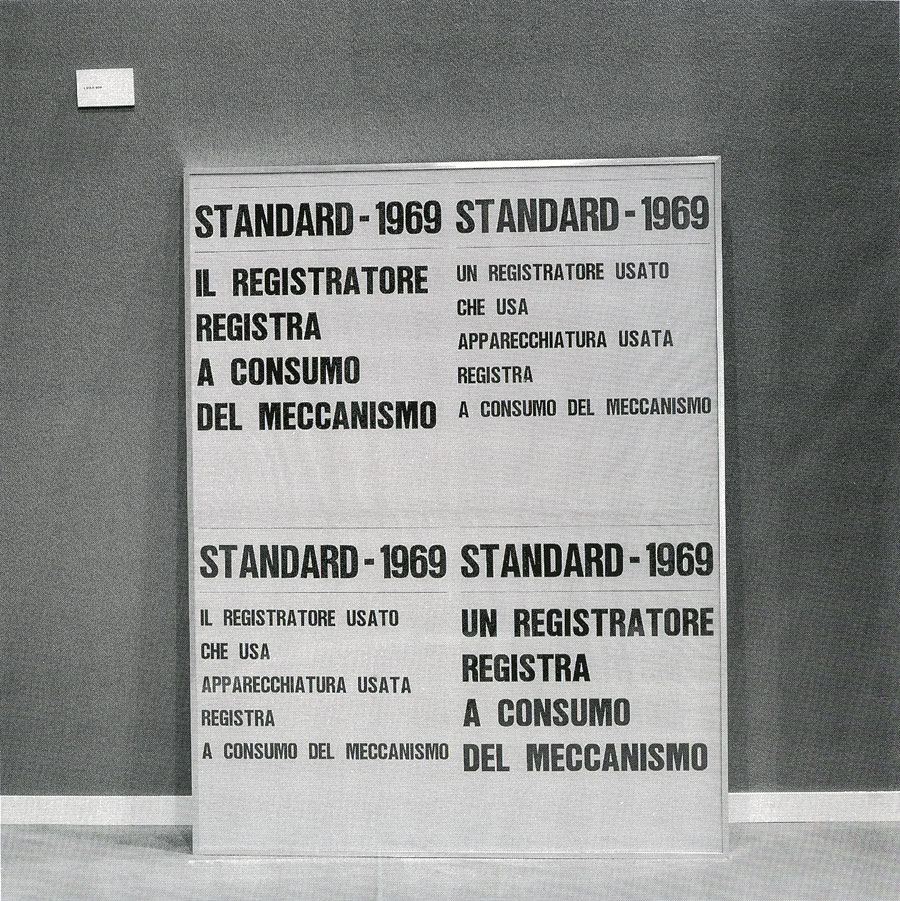Invisible, yet Present
In memory of Emilio Prini (1943–2016)
In memory of Emilio Prini (1943–2016)

It was on a winter afternoon in 2008 that I first met Emilio Prini. Having just moved to Rome, the gallerist Mario Pieroni offered to take me to visit the artist, ‘to make new friends’. At the time, I had no idea that many considered Prini an icon of hyper-conceptual art and a leading figure of the Arte Povera movement. Though he was included in pioneering exhibitions – Germano Celant’s ‘Im spazi’ (1967), Harald Szeemann’s ‘When Attitude Become Form’ at Kunsthalle Bern (1969), Wim Beeren’s ‘Op Losse Schroeven’ at the Stedelijk Museum, Amsterdam (1969), and Kynaston McShine’s ‘Information’ at MoMA, New York (1970) – throughout his career he made relatively few works, most between 1967 and 1972, and rarely appeared in public.

During the first hour or so of our conversation, I could sense a suspicious Prini trying to figure out whether I was interested in him because of his reputation. But as he began to realize that I actually barely knew who he was, my ignorance became an advantage. He finally relaxed. We talked for three hours and eventually this turned into a generous invitation to stay over for dinner. Many other dinner invitations followed.
Prini liked to talk about art. He loved Picasso, and on the wall of his dining room hung a portrait of the artist in his studio. During one visit, he pointed at the black and white photograph, and told me how much he liked Picasso’s ceramic works. He was genuinely excited. There was something about objects that attracted Prini. As well as ceramics, he seemed to have a real passion for hand-made black Oxford shoes. Once, by accident, I caught a glimpse of what I believe were five or six pairs of them, carefully lined up next to a wardrobe in his bedroom. Prini was a very reserved man, but once you got through to him, he would not hesitate to welcome you into his daily life.

As well as art, music was another great passion for Prini. In one of our meetings, he asked me if I knew the avant-garde composer György Ligeti. I said yes, but had not listened to his music in a long time. Prini, who was in a wheelchair, asked me to reach up to a shelf for a cassette tape. I pulled it out and put it into an old-fashioned tape deck. We listened to Ligeti’s Atmospheres (1961). I think what Prini liked about Ligeti’s music was its cosmic, dark, alien-like qualities and its chaotic, disruptive rhythmic patterns. Possibly what also drew Prini to the avant-garde composer was a shared fascination with time, mathematics, chaos theory and the idea of the absurd. Like Ligeti, Prini was a rebel, a provocative, irreverent kind of artist who defied conventions, authorities and political ideologies.
In his life, Prina was a lover of objects, and a bohemian. Yet, paradoxically, he also made works in which things are violently broken. In 1968, he made a proposition for a work involving a camera supposed to be used until its mechanism was destroyed. Prini calculated that it would require ten years and 20,000 shots to wear the camera out (Magnete, 1968); the year after, in another famous work, he undertook the task of using a tape recorder to record the sound of its internal mechanism until the incessant usage caused it to self destruct; the work exists as an instruction with the title STANDARD (1969), and as an action with the title L’USA usa (1969), which translates as ‘The USA Uses’ – a reference to the consumerist aspect of American culture.

Prini was interested in the imperceptible and the invisible. Little documentation exists of much of his work. A rare example is the series of photos of his action Identico Alieno (Identical Alien, 1967-68), in which he can be seen writing ‘Alieno’ in the sand which covers the floor of the gallery room – like the presence of a ghost leaving traces before vanishing. I read somewhere that Prini once pitched to contribute a full-scale portrait to a magazine and he tried to convince the editors to print the magazine in dimensions matching his own body. He was a funny man, always stretching the limits of the possible, the knowable. Invited to exhibit work in the show ‘Visualized Thought Processes’ at Kunstmuseum Luzern in 1970, he simply sent a telegram reading: Confermo partecipazione mostra (Confirm Participation in the Exhibition).
In 2008, Emilio Prini did confirm his participation – to a sound project I was putting together for an art space in Rome. He contributed a three-minute sound work titled Chitarrone, named after the large lute first used in late 16th century in Italy. Today I view that work as a condensed memory of our intense, yet brief encounter. The sound piece is Prini’s attempt at holding a Ligeti-like drone note with an electric guitar. In the background you can hear bits and pieces of a conversation between Prini and someone helping him with the recording. It must be a curator, since the only audible words are ‘interview’ and ‘exhibition’. But this was Prini: an artist who wanted to be invisible, yet present.























